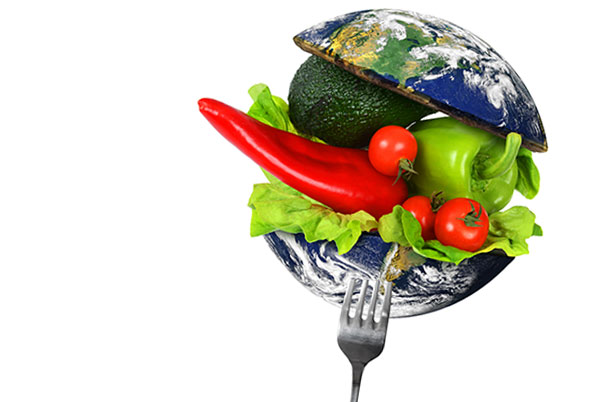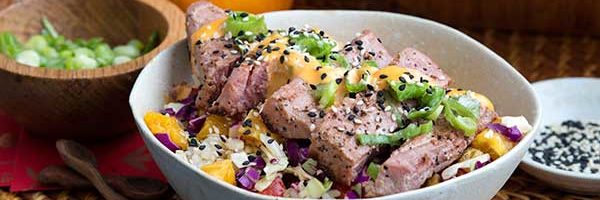
Best & Worst Global Cuisines for GF Diners
Which types of cuisine do you and your family like best when dining out? The good news is you can find safe gluten-free options in almost every type of global fare. There are certain cuisines that are much easier and likely safer to eat with a restricted diet and several that can be more challenging when trying to navigate the menu. Despite the challenges, I do encourage you to seek out all types of international cuisine when available to you. In this article, I’ll detail a handful of tips on increasing the likelihood of successful food ordering. I’m getting hungry even thinking about all the options – so let’s begin!
Most Gluten-Free Friendly:
Mexican food is one of the easiest cuisines to enjoy gluten-free. In my experience, you should be safe to enjoy most of the items on the menu, as long as you keep an eye out for a few potential gluten pitfalls. First and foremost, as delicious as they look when they’re brought to the table warm with fresh salsa, be sure to always ask whether the corn chips have been fried in the same fryer as anything with wheat. If so, please ask the server to remove them from your table to help you avoid temptation. Aside from the corn chips, the three main items to avoid are flour tortillas, mole sauce, and the red kind of enchilada sauce. Be sure to double check with your server that refried beans and Mexican rice are also safe at your restaurant of choice. Often, asking your server whether any items contain wheat or are fried in a shared fryer is appropriate for identifying safe options.
Indian restaurants are another of my personal favorites for easily enjoying gluten-free when eating out. Naan is an obvious no, but almost all curry dishes are naturally gluten-free. A unique appetizer called pakoras are also often made exclusively with chickpea flour (no wheat) and fried in a gluten-free fryer (be sure to ask!).
Latin American and Caribbean cuisine are great options for the gluten-free diner. Because wheat largely did not exist in Latin America prior to the immigration of Europeans, most food here is corn-, yuca-, and bean-based. Meat and seafood are also plentiful, and most sauces and seasonings do not use wheat flour in any form.
Italian food is becoming easier to enjoy gluten-free, especially in large cities. Even popular chain restaurants now offer a gluten-free pasta or a gluten-free pizza crust. Marinara sauce should be gluten-free across the board. Be sure to assess your level of comfort with possible cross-contamination, as many of these restaurants use a shared pizza stone or cooking surface (careful – some may use shared pasta water with gluten pasta). It’s always worth asking these questions, and politely requesting separate cooking water or a clean pan under your pizza in the oven.
Less Gluten-Free Friendly:
Asian cuisine (Japanese, Chinese, Thai, and Vietnamese, in particular) are likely to contain soy sauce or sauces containing wheat derivatives. Wheat or egg noodles are also relatively common on these menus. Many establishments in the states are starting to carry tamari, a gluten-free soy sauce. Rice noodles (sometimes called glass noodles) are a safe option for most noodle dishes and can be easily substituted.
A few items to be aware of with sushi:
• Unagi, which is barbecued eel, contains gluten in the sauce as a rule. This should be avoided, as the unagi arrives at the restaurant already in the sauce, which cannot be omitted.
• Tamago, sometimes found in sushi or nagiri, usually is made by scrambling an egg with soy sauce. This should be avoided, as it is often pre-made at sushi restaurants.
• Some restaurants offer tempura (deep-fried vegetables and/or shrimp) made with gluten-free rice flour instead of panko. However, be sure to ask about possible cross-contamination with the deep fryer.
Americana is one of the hardest types of food for most celiacs to enjoy in restaurants. Because of the heavy use of bread, wheat flour as a thickener in sauces and soups, deep-fried everything, and general love of beer (sometimes even in food), gluten is nearly ubiquitous in American-food restaurants. Occasionally, you’ll find restaurants offering gluten-free hamburger buns or bread. Often, it can be safest (if also the most boring) to select one of the few salads on the menu that would likely be safe. As always, ask lots of questions about ingredients!
Most restaurant staff really want you to enjoy safe and delicious meals at their establishments, so they’ll try their very best to accommodate your needs. To best help them help you, here are a couple of tips for how to explain your gluten-free dietary needs to restaurant staff:
1. You’ll catch more flies with honey than with vinegar. You’ll also end up with less gluten on your plate if you ask the right questions to your server in a respectful and kind tone.
2. Call the restaurant ahead to ask if they can accommodate gluten-free meals. This gives you a chance to gauge their comfort level before even setting foot in the door. Always ask about cross-contamination to assess your risk for gluten exposure. If you’re not sure, it’s probably best not to risk it!
• Best case scenario: The person who answers the phone says they can do gluten-free, mentions they have a separate fryer for French fries, and tells you to ask your server for the designated gluten-free menu when you come in. Your server will help take care of the rest.
• Worst case scenario: “Glut? Gluting? You’re allergic to what? I don’t know if we …” {click}.
• Most likely scenario: Something in between – if you feel like you can talk with your server about it more once you arrive and they can offer you at least a couple options, you’ll hopefully leave feeling full and healthy.
I really like the Find Me Gluten Free smartphone app to help find restaurants across the U.S. that are more likely to accommodate gluten-free dietary needs. There’s also the Dine Gluten Free app, specializing in GF restaurant reviews.
3. Consider taking a gluten-free food card with instructions for the chefs to the restaurant with you. This is especially helpful for foods of international cuisines, where you may not be as familiar with the ingredients. When you call the restaurant, ask which languages it may be helpful to have the instructions written in, but take one in English, too. Triumph Dining sells cards, or you can print some at glutenfreeeasy.com/facts/living/cards.asp.
A few parting words of wisdom from a celiac who treats celiacs:
If you do get glutened even after taking precautions, THROW AWAY YOUR LEFTOVERS! (Or give them to a non-gluten-free person in your house.) Even if they’re delicious, it’s not worth eating them a second time.
Understand that dining out always comes with a risk of not feeling well as a result (though hopefully a very small risk if you do your homework). However, and I cannot stress it enough, it is so worth it to practice dining out – it will enrich your social life and can help you feel much more capable of travelling and functioning as a happy and healthy gluten-free person!
As always, consult a medical professional before beginning any new protocol.
Dr. Kelly Baker is a naturopathic physician and acupuncturist at Healthwise Integrative Medicine in Seattle. She treats complex health conditions including celiac disease, with a focus on children and family care. Dr. Baker has followed a strict gluten-free diet for many years, making her uniquely aware of its challenges.



